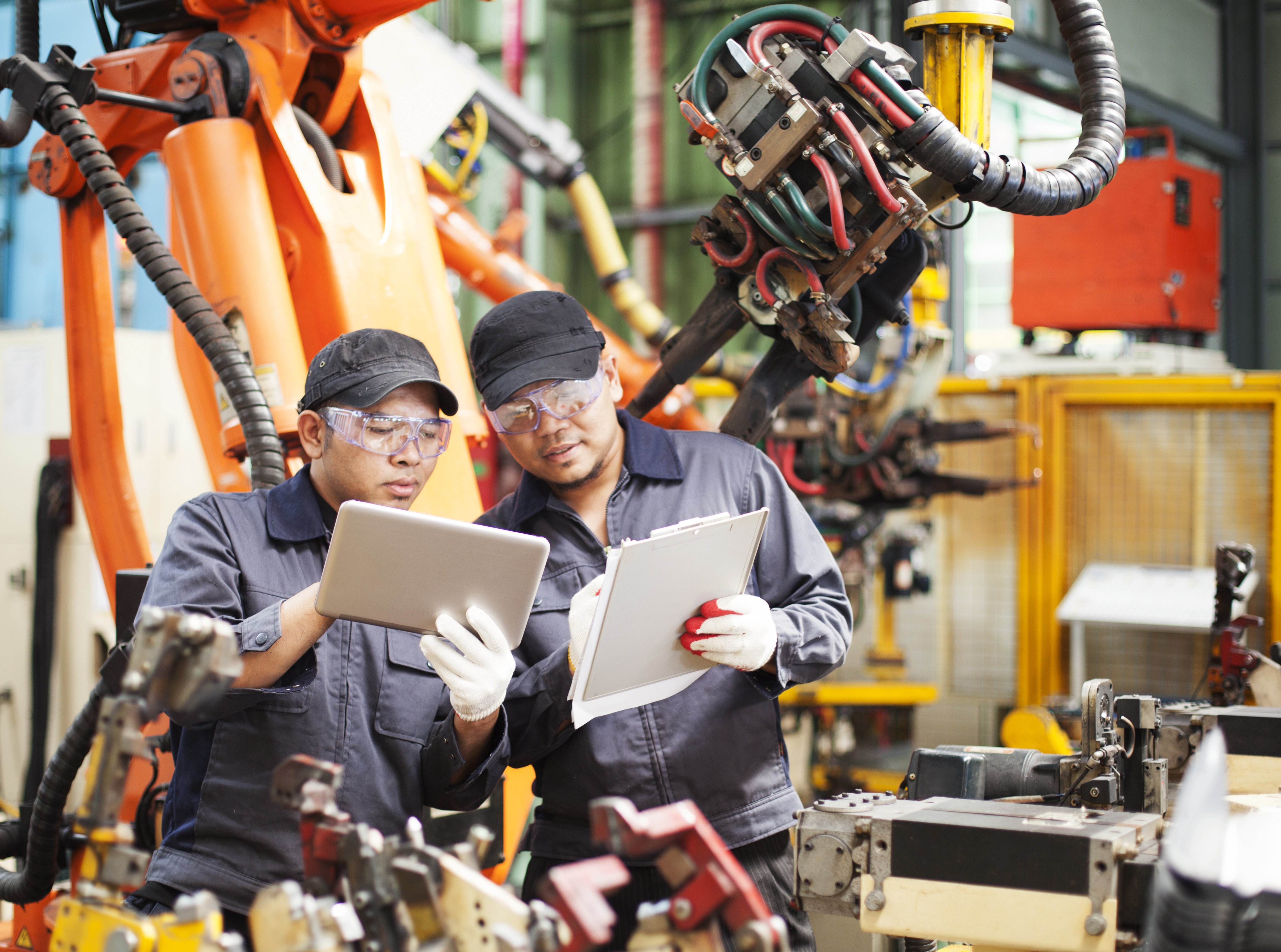In today’s technology space, it is almost impossible to go a day without reading or hearing about artificial intelligence (AI). AI has applications in seemingly every major industry, but what is really going on?
AI, as a subject, can sometimes be confusing to understand. There are many subsets of AI, and each one serves a distinct purpose. Our goal in this post is to dive into the ways that AI is being implemented in manufacturing and to give you ideas for how your manufacturing business can prepare for artificial intelligence now and in the coming future.
Applications In Manufacturing
Machine learning is the main area of AI that is currently being applied in manufacturing. The purpose of machine learning is to give a computer the ability to learn new information without being explicitly programmed to know that information. This is made possible through machine learning algorithms, which dictate the way that an AI system should break down and process information.
As an AI system gathers more and more data and learns from it over time, it can gain the ability to make accurate predictions, automate decision-making, detect real-time malfunctions, and much more. For a manufacturer, this will translate into greater efficiency in production, waste management, cost-savings, and will also introduce new features like:
- Improvement in the accuracy of maintenance and repair schedules
- Predict workloads based on market trends
- Product quality management
- Process controls
- Management of operations
- Predictive maintenance/asset management
- Supply chain management/sourcing
- Safety and facility management
All of these bring tremendous value to a manufacturer, and that is why AI is such an important area to focus on.
It Is All About Data
Data is the lifeblood of AI. For an AI system to function effectively, it needs a substantial amount of data at its disposal. The better the data, the better the AI. This is why it is absolutely necessary for a manufacturer to move their operations onto a digital medium.
The first step in preparing for the integration of AI in a factory is to enable the machinery with data tracking and communication ability. At Oden Technologies, we offer a simple data collection device that can be plugged into any machine or PLC to allow for data to be wirelessly transferred to our cloud-platform.
Once the hardware is in place, the next step is to connect the machinery to a central platform where the data will be recorded and processed by different algorithms. Every platform offers some differences in features, but the main objective is to ensure that you are collecting valuable data about your manufacturing operations. Having a large quantity of quality data is necessary to train an AI to be able to more accurately do all of the things that it is capable of. With less data comes less accuracy.
Third-Party Services
In most cases, it makes the most sense to use a 3rd-party service because of the significant amount of capital needed to develop such a platform. There are various platforms available, and the best part about competition is that it will drive the products and services to deliver more value to the customer.
When you use a platform to manage and operate your smart factory, you are limited to the features that this service provides. The good part, however, is that these companies are already providing features based on AI and will continue to develop and make use of new forms of that technology. By working with a provider, you can trust that they will focus on these features.
Straightforward Preparation
Preparing for the integration of AI in manufacturing is pretty straightforward. You either spend hundreds of thousands, if not millions, to hire AI engineers to develop a system for you, or you use a 3rd-party service that is already building out these features. Once you find the right company to work with, it is as easy as adding a plugin to your machines and connecting them to the platform online.
If this is the route that you choose to go, the best part is that you do not need to worry much about any other preparation. As long as the service that the customer is using is implementing effective machine learning algorithms and other aspects of AI, the benefits of this technology will be easily attainable.


